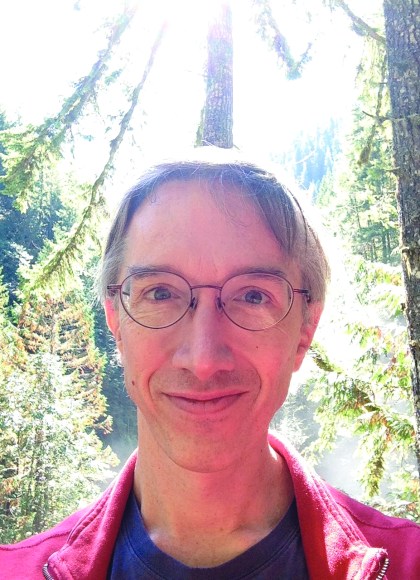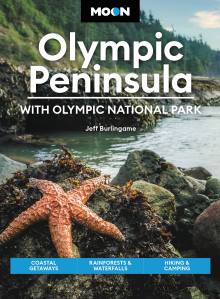The Best of Washington State in 10 Days
This itinerary takes you to the most distinctive and best of Washington State’s destinations: a towering peak, an ancient rain forest, a windswept coastline, a turquoise lake, a whale-friendly archipelago, and one of America’s most appealing cities. Because so much of your time is spent outdoors, this trip is best suited for travel between June and September, during the long and glorious days of the Pacific Northwest summer. It’s doable in May and October as well. In those months you get less sunshine and more rain, but you’ll have fewer crowds to contend with.
You can pick any region of this itinerary for a shorter, more focused trip. There are suggestions here for lodging, but, with the exception of Seattle, you can also choose to camp on most nights. Washington boasts abundant campgrounds, some of them in spectacular locations.
Seattle in 3 Days
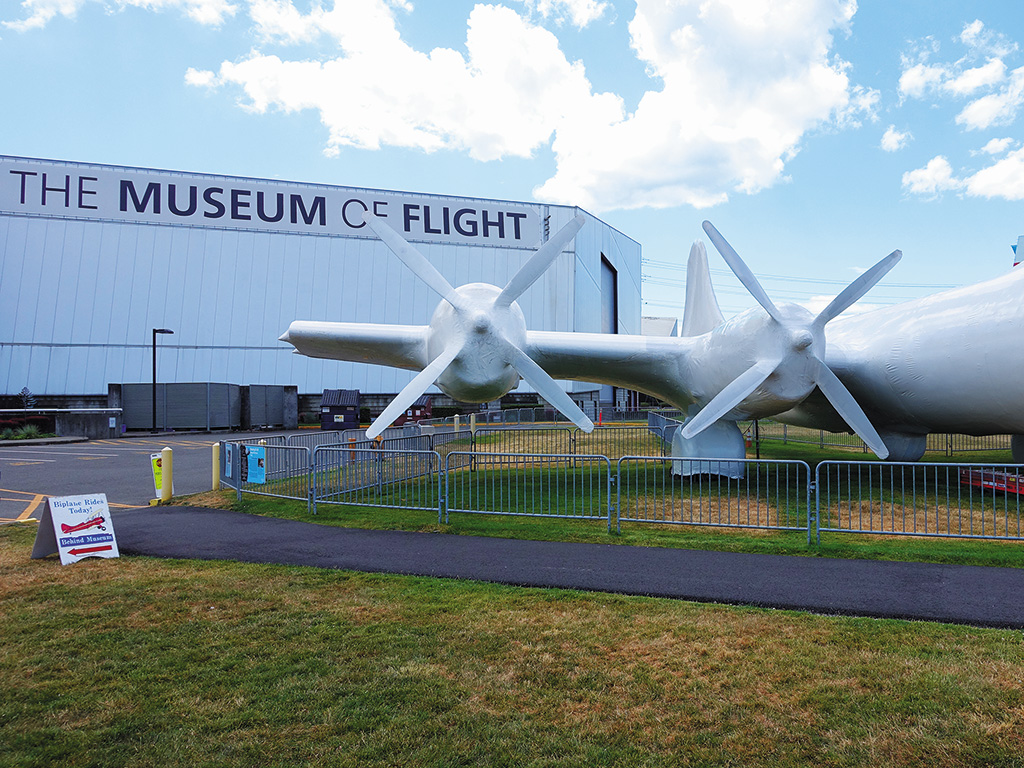
Day 1
Depending on the logistics of your arrival, you may simply want to touch down in Seattle, have a good meal, and rest up. If you have time, head to the impressive Museum of Flight to the south of the central city on your way into town from Sea-Tac airport.
Day 2
Seattle is a big, dynamic city with enough historical and cultural attractions to keep you busy for a month. Today, get the classic sightseeing experience by visiting Pioneer Square, Pike Place Market, and Seattle Center, home of the Space Needle.
Day 3
Get off the tourist track to explore Seattle a little further. The city is a collection of colorful neighborhoods. If you only have time for one, make it Capitol Hill, which has fabulous restaurants, hopping nightlife, stately old mansions, and beautiful Volunteer Park. A little further afield, Ballard is also a great dining destination, as well as the site of Chittenden Locks, a feat of ambitious early-20th-century engineering that remains the crucial link in Seattle’s system of waterways.
Mount Rainier and the South Cascades in 2 Days
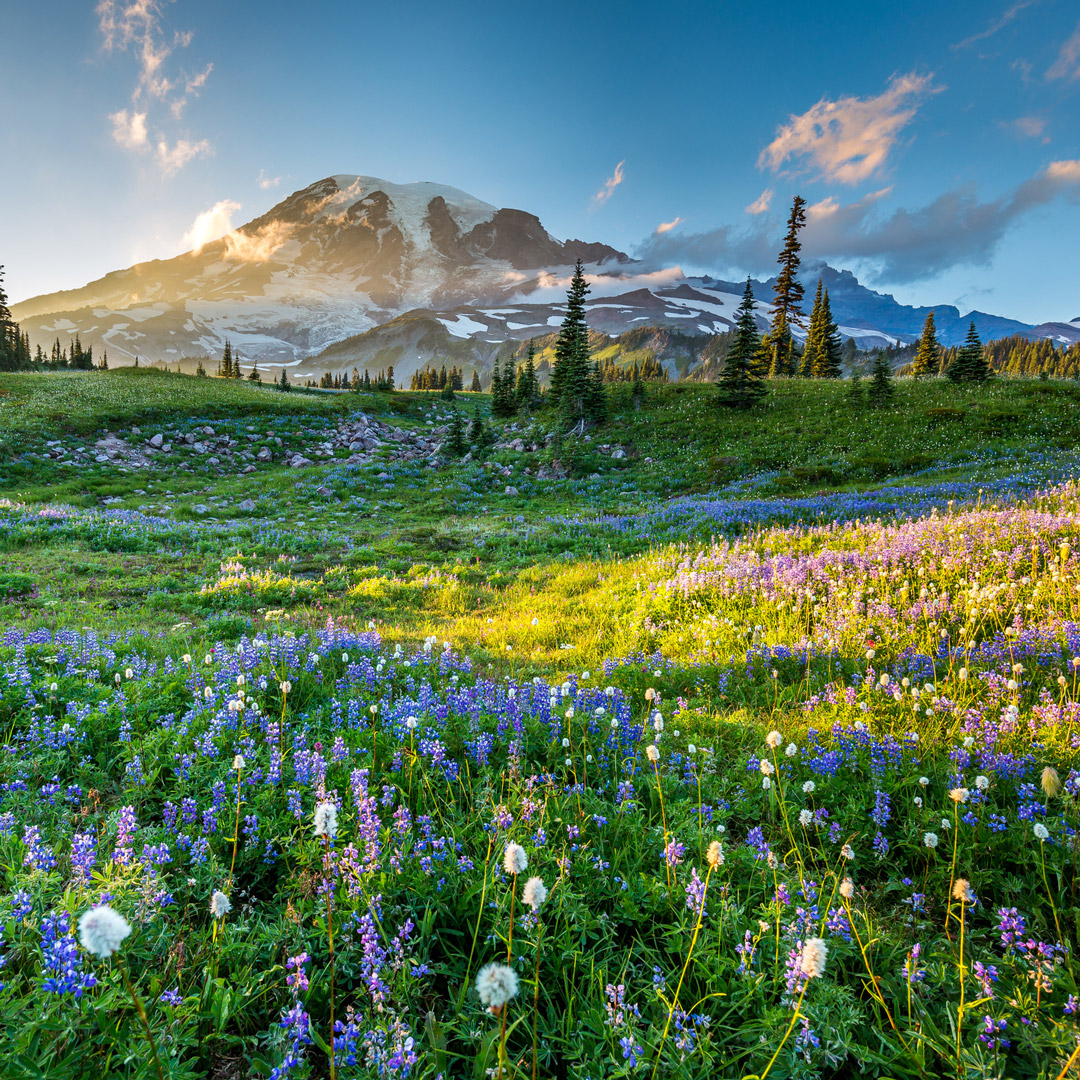
Day 4
From Seattle a two-hour drive will get you to the White River entrance at the northeast corner of Mount Rainier National Park. A pretty, winding road climbs to the Sunrise area, a hub of park activity and the highest point on the mountain accessible by car. Get your bearings at the visitors center, have lunch at the cafeteria, and then head out for a couple of hours of alpine hiking.
In the late afternoon drive to the Crystal Mountain ski resort, where you’ll be spending the night. Take the gondola up to Summit House for dinner. It’s a pricey trip and the food is nothing special, but the spectacular view makes it all worthwhile: In one panorama, you take in Mounts Adams and St. Helens to the south and Baker to the north, with majestic Rainier front and center.
Day 5
Head back into the park and make the drive around to the other side of the mountain, stopping along the way for a short hike on the Grove of the Patriarchs Trail, which is like a museum of old-growth trees. The road west from there is another gorgeous drive, eventually climbing to the Paradise area, where there’s an impressive visitors center and a classic cedar lodge. After Sunrise and Crystal Mountain, this will be your third picture-book view of the mountaintop, each strikingly different from the others. It’s also the starting point for numerous trails; spend the afternoon and early evening hiking. If you want to take it easy, sign up for a ranger-led nature walk.
Have dinner at the Paradise Inn. You can bed down there, or at the inn near the Nisqually entrance in the southwest corner of the park, or at one of the hotels just outside the entrance in the town of Ashford. No matter where you stay, you’ll need a reservation.
With More Time
Leaving Mount Rainier National Park from the Nisqually entrance, head west and then south on I-5 to the turnoff for Mount St. Helens—a 2.5-hour drive in total. As you approach the Johnston Ridge Observatory at the base of the volcano it’s hard not to be awed by the extent of the devastation caused by the eruption of St. Helens in 1980. The observatory is a first-class facility for viewing St. Helens and learning about the causes and consequences of the blast. Trails take you closer, and there are daily ranger-led walks.
Olympic Peninsula in 3 Days
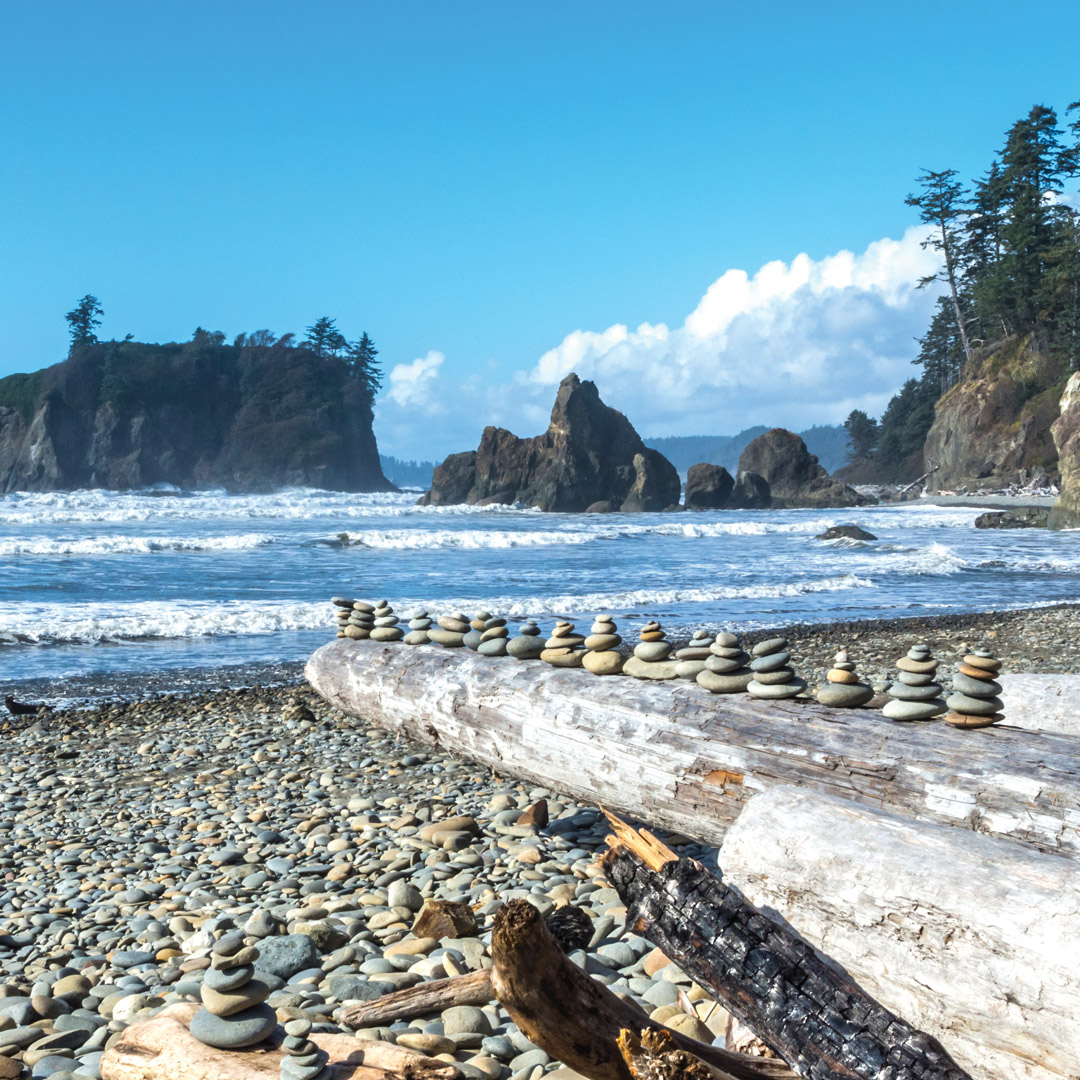
Day 6
Say goodbye to Rainier in your rearview mirror as you head west toward the Olympic Peninsula. Stop for lunch in the state capital, Olympia, at about the midpoint of a three-hour drive to Lake Quinault, located at the southern end of Olympic National Park. Here you’ll experience the lush, primordial forest for which Washington is famous. The rain forest surrounding the lake is home to some of the tallest trees in the world, several of which are easily accessible on short roadside trails.
You’re now in the rainiest region of the contiguous United States, averaging 150 inches a year, but the precipitation is seasonal—if you’re here in summer you stand a good chance of getting a dry day. If it is showering, though, you can still get a great look around from the comfort of your car on the Quinault Rain Forest Loop Drive. For your overnight stay you have the option of a national park lodge on the lake or one of several modest hotels in the area.
Day 7
Start the day by getting a taste of Washington’s rugged Pacific coast. It’s a 45-minute drive to Ruby Beach, a classic example of the misty, pebble-strewn coastline, studded with haystacks (giant rock formations). You won’t need your swim trunks, but you’ll want your camera to capture the ethereal beauty.
From here U.S. 101 heads back inland and turns north; after a 75-minute drive you reach glacier-carved Lake Crescent, the most beautiful lake in the state. You can stop along the way for lunch in Forks, the town made famous by the Twilight novels, but the sooner you get to the lake the more time you’ll have for an afternoon spent floating on its tranquil, turquoise-green waters. (Kayaks and canoes are available for rent.) There’s yet another national park lodge here where you can stay, or you can get a jump on the next day’s driving by heading east another half hour to Port Angeles, where there are more lodging options.
Day 8
In the morning, head up to the only part of the Olympic Mountains accessible by car: Hurricane Ridge, an hour’s drive from Lake Crescent or 35 minutes from Port Angeles. The trails here offer a different kind of mountain experience from Mount Rainier. Fields filled with wildflowers give you vast vistas; you have a view to the north of the Strait of Juan de Fuca glimmering 5,000 feet below, and to the south of the neighboring Olympic peaks.
Come back down to sea level on the 90-minute drive to the charming town of Port Townsend at the northeast corner of the peninsula. You’ll find lots of good dining options here, but for an earlier lunch you can stop at Sequim along the way. From Port Townsend take the 35-minute ferry ride to Keystone Landing on Whidbey Island. (You can reserve a place on the ferry.) You’ll be in Ebey’s Landing National Historical Reserve, which includes, 10 minutes from the ferry dock, the old fishing town of Coupeville, where you’ll overnight. Spend the evening strolling the quaint streets that make up the town, and if you’re up for a short hike head to the bluffs above Parego Lagoon, where you get a gorgeous view of the Olympic Mountains and Strait of Juan de Fuca.
San Juan Islands in 2 Days
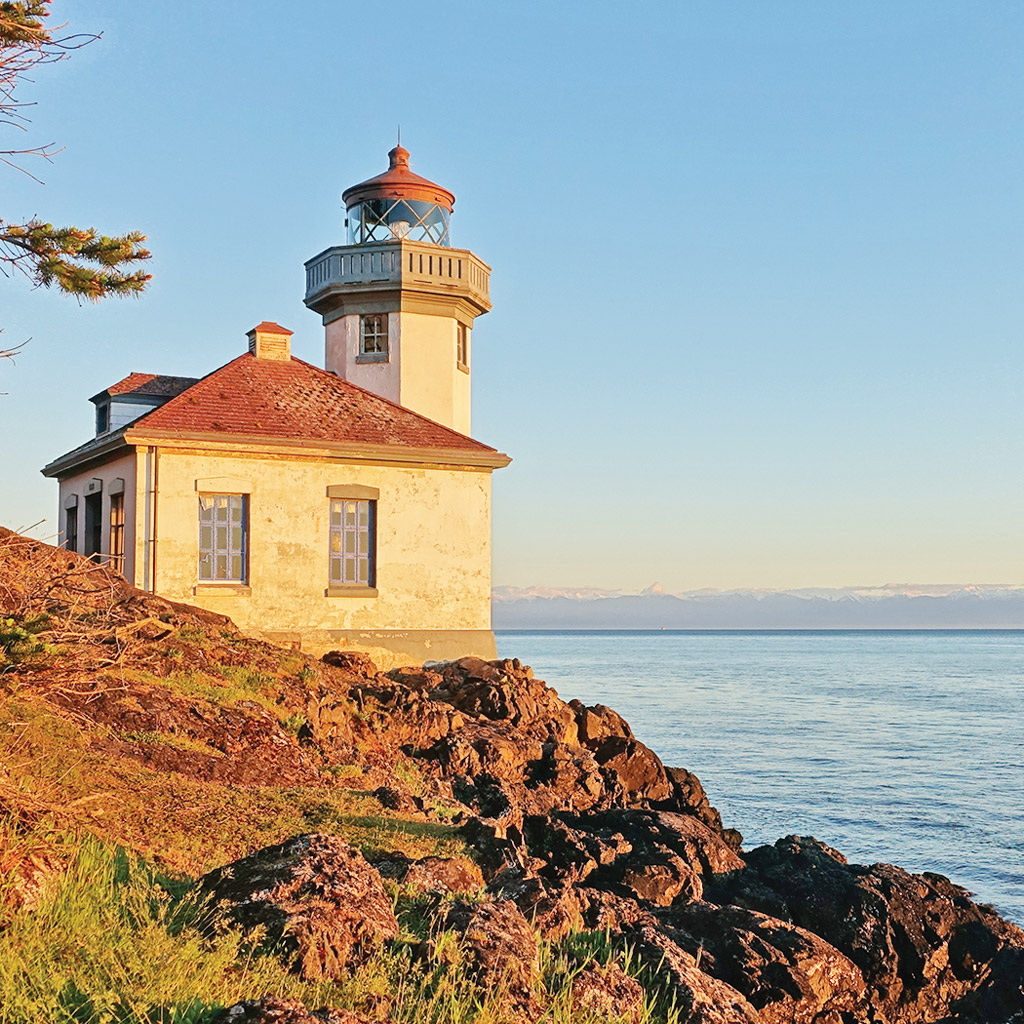
Day 9
Drive north from Coupeville and over the picturesque bridge at Deception Pass to the town of Anacortes, a 45-minute trip, and catch the ferry to Friday Harbor on San Juan Island. The 75-minute cruise through the archipelago is a beautiful way to get into the San Juans state of mind. You can reserve a place on the ferry online, and in summer it’s essential to do so. You also need to arrange lodging well ahead of time. There are lots of options—waterfront campsites, B&Bs, motels, fishing lodges, old-school resorts—but they all book up in summer.
Where you stay should dictate your touring strategy. You’ll want to see American Camp, Lime Kiln Point State Park, English Camp, and Roche Harbor; begin with whichever is farthest from where you’ll bed down for the evening, and work your way toward your lodging from there.
Day 10
If you didn’t have time for one of the main sights the previous day, you can make up for it in the morning, or get out on the water. You have two classic options: rent a kayak and go for a paddle—if this is your first time here you should take a guided tour—or go on a whale-watching cruise to meet the resident orcas.
Take an early-afternoon ferry back to Anacortes, then drive back to Seattle. If traffic is clear it’s about a three-hour trip.
With More Time
If your goal is to unwind and get away from it all, the best way to do that is to spend another night or two in the San Juans. You can ferry over to Orcas Island, or just stay put on San Juan, maybe paying a visit to one of the smaller sights such as the lavender farm or winery, or hanging at Lime Kiln Point State Park and watching for whales in Haro Strait.
To explore Orcas Island, catch a morning ferry from Friday Harbor. Orcas has an even more laid-back feel, with more than its share of artists and eccentrics. Head north from the ferry terminal to the main town of Eastsound, where you can have lunch and do some window-shopping, then continue on to Moran State Park and spend the afternoon taking in the view from the top of Mount Constitution, rowing a boat on Mountain Lake, and even having a lake swim. The restaurant at Doe Bay Resort is a great dinner choice on this part of the island. If you’re into the hippie vibe there it can also be a good place to spend the night, but if you prefer something more mainstream choose one of the lodging options back in the direction of Eastsound.
The next morning, start your day with a kayak trip. Possible launching points include Doe Bay, Smuggler’s Villa Resort at the north end of the island, and Deer Harbor on the west side. No matter where you start, kayaking around Orcas gives you the opportunity to paddle by smaller outlying islands, where the only inhabitants are wildlife. In the afternoon pay a visit to isolated Orcas Island Pottery, a one-of-a-kind studio and shop with a beautiful waterfront location on the western side of the island. In the evening have dinner at one of Eastsound’s restaurants and take in the small-town nightlife.
Whether you’re headed to top of the Space Needle or Mount Rainier, explore the unique culture and rugged wilderness of the Evergreen State with Moon Washington.
Newsletter Signup
By clicking ‘Sign Up,’ I acknowledge that I have read and agree to Hachette Book Group’s Privacy Policy and Terms of Use
Pin For Later


